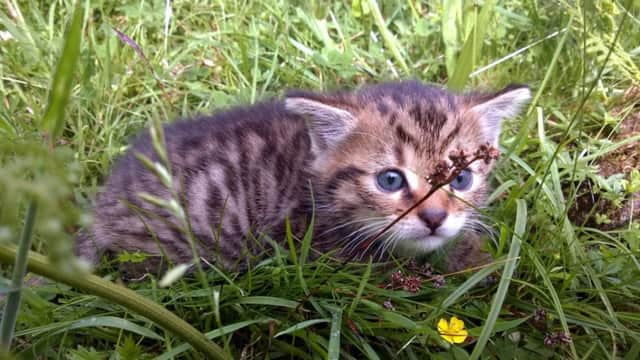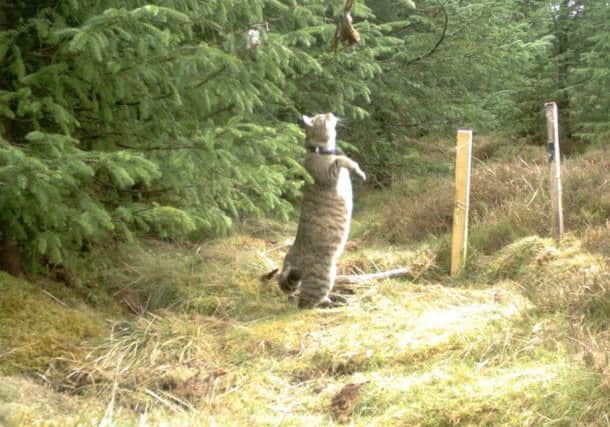Caught on camera, the rare Scottish wildcat


Dr Ruairidh Campbell, 37, is a researcher for Oxford University’s Wildlife Conservation Research Unit, known as WildCRU.
He is based near Inverness but travels across the Highlands monitoring Scottish wildcats.
Advertisement
Hide AdAdvertisement
Hide AdDebate about numbers has raged in recent years and, due to interbreeding with domestic cats, experts are currently trying to agree exactly how much DNA is needed for an animal to be classed as a wildcat.


The project will add additional data to a national study to determine numbers and how best to help the species survive.
All of the DNA results so far show wildcats which have a percentage of domestic cat DNA. However, two months of the project still remain and it is hoped that some of the animals caught will prove to be pure.
CONNECT WITH THE SCOTSMAN
• Subscribe to our daily newsletter (requires registration) and get the latest news, sport and business headlines delivered to your inbox every morning
The pictures were taken using hidden cameras which are triggered by movement and heat. Dr Campbell has also released photographs of a wildcat kitten, taken on his mobile phone.
Wildcats, which live only in the Highlands, are rarer than the Bengal tiger.
The photos show wildcats playing with bait, and a black mother cat with an army of tabby kittens. Other pictures show a wildcat scratching a post, and the mobile phone photos show a kitten hiding in long grass.
Two night images taken with infrared cameras have also been released, showing what is thought to be a pure wildcat, although DNA tests have not yet been completed.
Advertisement
Hide AdAdvertisement
Hide AdDr Campbell said: “There are very few pure wildcats – the worry is that none are left. About 12 to 15 per cent of cats we see look like they could be pure. There’s an old estimate that says around 400 are left, so it goes with that.
“Hopefully by the end of February we will know whether there are any left.”
The traps consist of large cages and wooden posts scented with a valerian tincture which cats rub because they like the smell, leaving hair samples. Traps are baited with game meat such as pheasant or grouse. Dr Campbell said: “It is exciting when you catch them. Some of them hiss and spit but when we caught a male last week that looks like pure wildcat he was curled up asleep.
“We’re trying to find out more about the behaviour of wildcats, hybrid wildcats and domestic cats and find out how they are interacting.”
Professor David Macdonald, director of the WildCRU project, said: “It has taken us more than 15 years of dogged research to get to this point where, at last, we can get reliable figures on the numbers of wildcats surviving – these photos are a revelation, and can transform evidence-based policy.
“Part of the power of the project has been our collaborators, including the National Museums of Scotland and Scottish Natural Heritage. Saving the wildcat is a team effort.”
SCOTSMAN TABLET AND IPHONE APPS